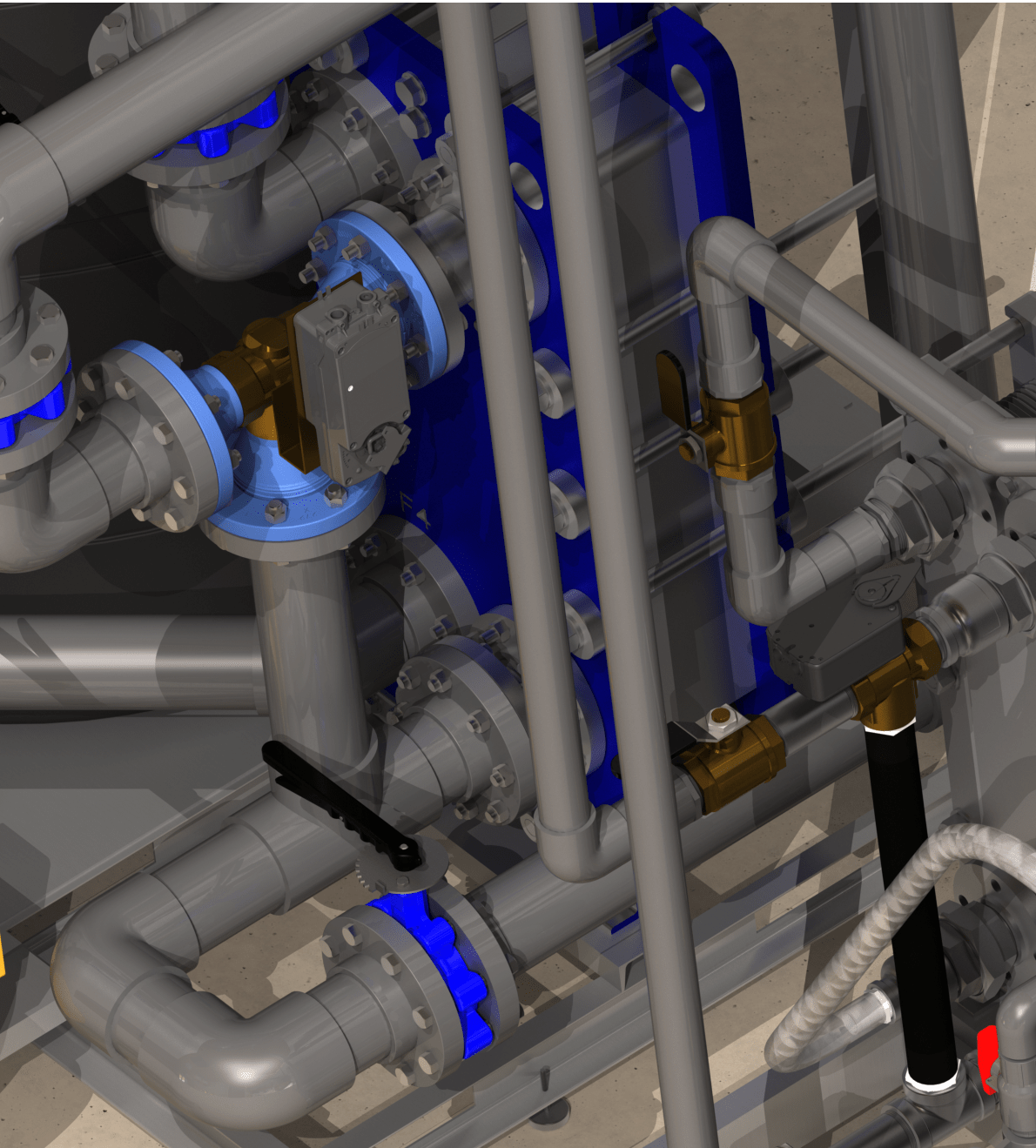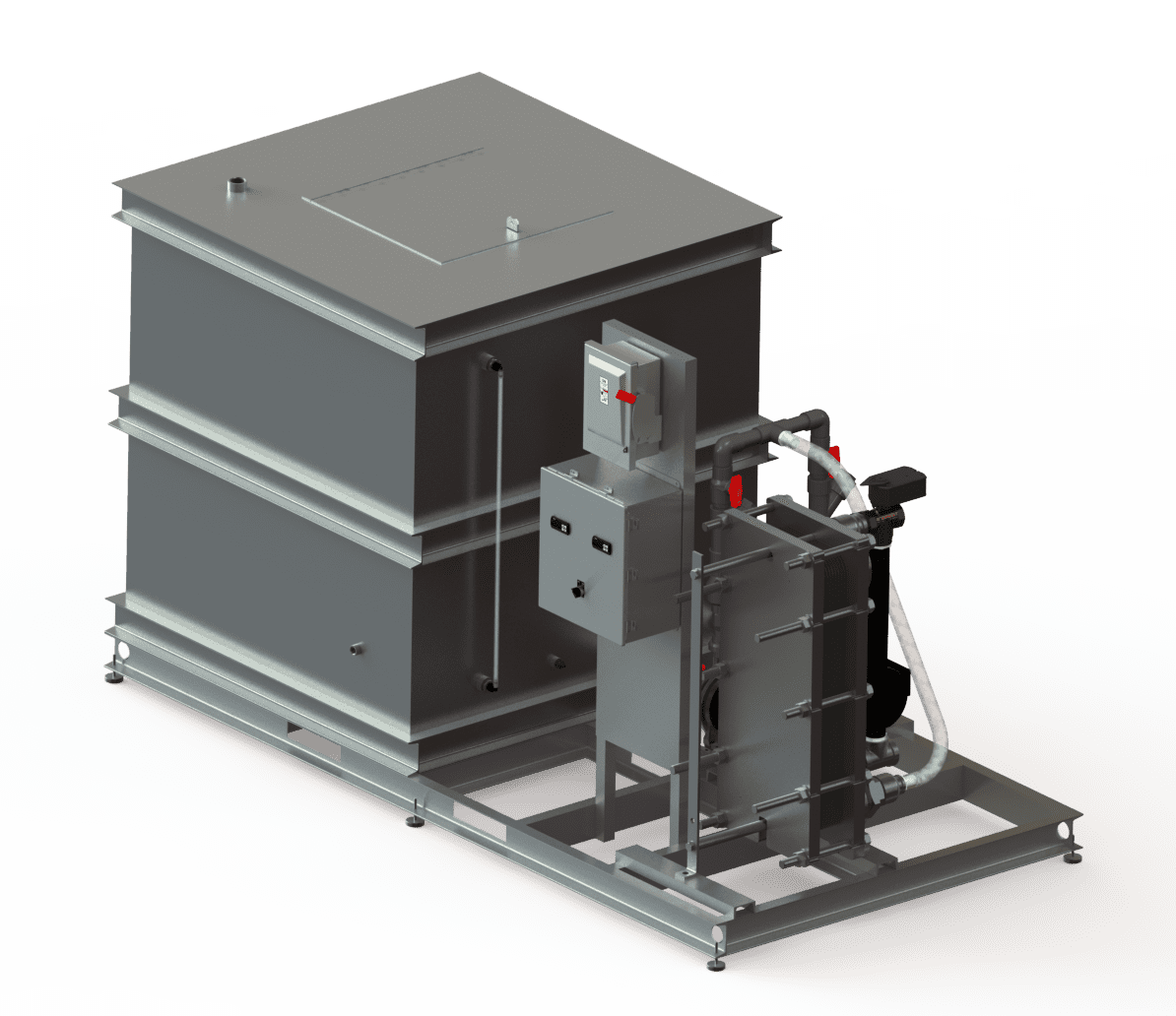A Comprehensive Overview to Selecting the Right Heat Transfer Solutions for Your Needs
Choosing the suitable Heat transfer system is essential for operational performance. Different systems satisfy different requirements, affected by factors such as temperature variety and fluid type. Understanding the concepts behind Heat transfer, such as radiation, convection, and transmission, is essential. Furthermore, assessing power sources and maintenance techniques can impact long-lasting performance. A closer assessment of these factors to consider exposes how to customize a system to particular needs. What should one prioritize in this complicated decision-making procedure?
Recognizing Heat Transfer: Key Principles and Principles
Although Heat transfer might appear like an uncomplicated idea, it encompasses a range of concepts that are fundamental for effective system layout. Understanding these principles is crucial for developers and engineers that intend to optimize thermal efficiency in numerous applications. Transmission, for example, involves the transfer of Heat via solid materials, while convection describes the activity of Heat within liquids. Radiation, one more key principle, explains just how Heat can be moved with electro-magnetic waves. Each of these systems plays a crucial duty in identifying exactly how energy moves within a system. By completely comprehending these ideas, professionals can make educated choices, ensuring that Heat transfer systems run successfully and meet the particular demands of their applications
Kinds Of Heat Transfer Solutions: A Summary
Recognizing the principles of Heat transfer prepares for exploring the different sorts of Heat transfer systems offered. Heat transfer systems can be categorized mainly into three types: convection, conduction, and radiation. Conduction entails Heat transfer via solid materials, depending on straight get in touch with between fragments. Convection, on the various other hand, takes place in fluids (gases and liquids) where the motion of the fluid itself facilitates Heat transfer. Radiation entails the transfer of Heat with electromagnetic waves and does not require a medium, allowing it to occur in a vacuum cleaner. Each kind of system has distinctive qualities and applications, making it necessary for individuals and organizations to meticulously analyze their details needs when choosing one of the most suitable Heat transfer service.
Applications of Heat Transfer Equipments in Various Industries
Heat transfer systems play a necessary role throughout different markets, affecting performance and product high quality. In commercial production processes, they facilitate precise temperature control, while in food and beverage processing, they ensure security and preservation. Additionally, heating and cooling and environment control systems depend greatly on efficient Heat transfer to preserve comfortable environments.
Industrial Production Processes

Many commercial production procedures count heavily on reliable Heat transfer systems to make the most of productivity and boost product high quality. In industries such as metalworking, Heat exchangers play a crucial duty in keeping perfect temperatures throughout welding, casting, and building. These systems ensure consistent Heat circulation, which is important for accomplishing desired product properties. In the chemical production industry, Heat transfer systems assist in specific temperature control throughout reactions, influencing yield and safety and security. Furthermore, in fabric production, reliable Heat management is vital for dyeing and completing procedures, influencing color uniformity and material top quality. By choosing suitable Heat transfer innovations, makers can enhance energy performance and minimize operational costs, ultimately resulting in an extra sustainable and affordable production environment.
Food and Beverage Handling
Reliable Heat transfer systems are equally important in the food and drink handling market, where maintaining excellent temperature levels is critical for food security and top quality. These systems play an essential function in procedures such as food preparation, sanitation, and pasteurization, ensuring that products are risk-free for consumption and maintain their nutritional value. Heat exchangers, for circumstances, efficiently transfer Heat between liquids, maximizing energy use while lessening temperature level changes. In addition, refrigeration systems are fundamental for maintaining perishable things and extending rack life. The choice of Heat transfer innovation straight impacts functional effectiveness and product stability, making it vital for food and beverage producers to choose the proper systems tailored to their particular processing requirements. This careful selection ultimately contributes to customer complete satisfaction and food security.

A/c and Climate Control
While several industries rely upon Heat transfer systems for performance, HVAC (Home Heating, Air Flow, and Air Conditioning) plays an important duty in keeping indoor climate control throughout various setups. These systems make use of Heat transfer principles to regulate moisture, air, and temperature high quality, making sure convenience and safety and security in household, commercial, and commercial atmospheres. Effectively developed HVAC systems improve energy effectiveness, reduce functional expenses, and decrease environmental impact. In industrial buildings, for example, reliable environment control adds to staff member performance and client contentment. In industrial applications, HVAC systems help maintain optimal conditions for equipment procedure and item preservation. Choosing the right Heat transfer system is vital for conference particular climate control demands and achieving total system efficiency.
Examining Power Resources for Heat Transfer Systems
In examining power sources for Heat transfer systems, a comparison of renewable resource alternatives and fossil fuel factors to consider is important. Sustainable resources, such as solar and wind, offer lasting options that can decrease environmental influence. On the other hand, fossil fuels continue to be widespread because of their recognized framework and power density, motivating a mindful assessment of both options.
Renewable Energy Options

Fossil Gas Considerations
Examining nonrenewable fuel source factors to consider is necessary for the efficiency and sustainability of Heat transfer systems. Fossil gas, such as gas, oil, and coal, are standard power sources that provide significant Heat result, making them popular options for domestic and industrial applications. Nevertheless, their ecological impact, consisting of greenhouse gas emissions and source deficiency, increases issues. When selecting a heat transfer system, it is essential to assess the availability, cost, and regulative elements associated with these fuels. Additionally, the performance of fossil gas systems have to be thought about, as greater effectiveness can alleviate some environmental disadvantages. Ultimately, a balanced technique considering efficiency and sustainability can lead decision-makers toward one of the most appropriate check my source Heat transfer service for their specific needs.
Elements to Consider When Picking a Heat Transfer System
Selecting a proper Heat transfer system calls for mindful factor to consider of different variables that can significantly affect effectiveness and performance. One essential element is the operating temperature level variety, which determines the materials and layout ideal for the application. Additionally, the kind of fluid utilized in the system-- whether gas or liquid-- affects Heat transfer performance and compatibility. The system's dimension and capability must line up with the particular demands of the operation to avoid ineffectiveness. Energy source availability is also essential, affecting operating prices and sustainability. The installment environment, including area restraints and ease of access for maintenance, plays a substantial role in system choice. Regulatory compliance and safety and security standards need to be considered to guarantee the system satisfies all lawful needs.
Upkeep and Performance Optimization for Heat Transfer Equipments
Maintaining Heat transfer systems is important for guaranteeing maximum effectiveness and durability. Normal maintenance activities, such as cleansing Heat exchangers and examining insulation, assistance avoid effectiveness losses because of fouling and thermal bridging. In addition, monitoring system parameters, consisting of stress and temperature level, enables early detection of abnormalities, decreasing downtime and costly repair services. Applying a precautionary upkeep schedule can optimize performance and prolong the life expectancy of parts. Updating to advanced control systems can improve operational efficiency by adjusting to varying this article problems and loads. By prioritizing upkeep and effectiveness optimization, drivers can accomplish reduced power consumption, lower operational costs, and boosted overall system dependability, inevitably causing much better resource use and a much more sustainable operation.
Future Fads in Heat Transfer Technologies
As sectors significantly focus on sustainability and energy effectiveness, future trends in Heat transfer innovations are readied to undergo significant changes. Advancements such as innovative products, consisting of carbon nanotubes and nanofluids, guarantee improved thermal conductivity and efficiency. Furthermore, the assimilation of renewable resource sources right into Heat transfer systems is gaining momentum, promoting environment-friendly remedies. Smart technologies, including IoT sensing units, are anticipated to transform surveillance and control, making it possible for real-time data evaluation for enhanced efficiency. The advancement of modular and small systems will help with less complicated installment and upkeep, providing to varied applications. These improvements show a shift in the direction of more lasting, effective, and versatile Heat transfer solutions, aligning with worldwide energy goals and environmental standards.
Often Asked Inquiries
What Are the Ecological Influences of Heat Transfer Solutions?
The ecological impacts of Heat transfer systems can include greenhouse gas discharges, power consumption, and prospective thermal pollution. Additionally, incorrect disposal of materials and inadequacies can add to source depletion and ecosystem interruption.
Exactly how Do I Calculate the Cost-Effectiveness of a Heat Transfer System?
To compute the cost-effectiveness of a warmth transfer system, one must evaluate initial costs, functional expenses, upkeep requirements, and energy effectiveness, contrasting these variables versus the anticipated life-span and performance of the system.
Can Heat Transfer Systems Be Utilized in Residential Setups?
Heat transfer systems can without a doubt be used in household settings. They provide effective heating and cooling down Our site options, making homes a lot more comfy while potentially lowering power costs. Their flexibility enables for different applications in property settings.
What Safety Regulations Put On Heat Transfer Solutions?
Safety and security laws for Heat transfer systems normally include standards on installment, operation, and maintenance. Compliance with neighborhood building ordinance, supplier specifications, and industry requirements is vital to assure secure and reliable system performance in various applications.
Just How Do Different Products Affect Heat Transfer Performance?

Transmission, for instance, involves the transfer of Heat via solid products, while convection refers to the motion of Heat within fluids. Recognizing the concepts of Heat transfer lays the groundwork for discovering the different kinds of Heat transfer systems available. Heat exchangers, for circumstances, successfully move Heat between fluids, enhancing energy usage while reducing temperature variations. In examining energy sources for Heat transfer systems, a contrast of renewable energy options and fossil gas considerations is vital. Metals, such as copper and aluminum, conduct Heat successfully, whereas insulators like rubber and glass slow down Heat flow.